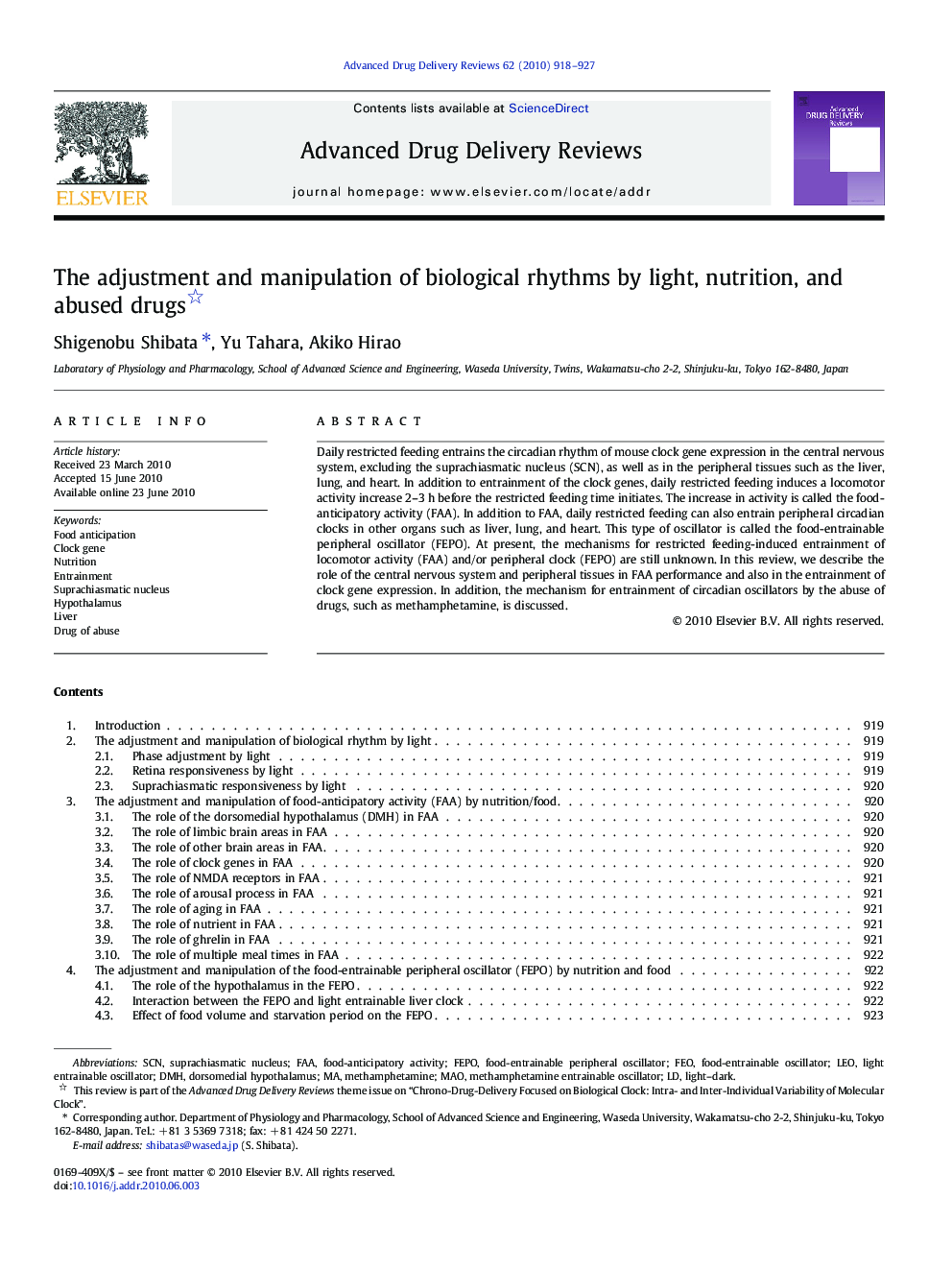| Article ID | Journal | Published Year | Pages | File Type |
|---|---|---|---|---|
| 2072237 | Advanced Drug Delivery Reviews | 2010 | 10 Pages |
Daily restricted feeding entrains the circadian rhythm of mouse clock gene expression in the central nervous system, excluding the suprachiasmatic nucleus (SCN), as well as in the peripheral tissues such as the liver, lung, and heart. In addition to entrainment of the clock genes, daily restricted feeding induces a locomotor activity increase 2–3 h before the restricted feeding time initiates. The increase in activity is called the food-anticipatory activity (FAA). In addition to FAA, daily restricted feeding can also entrain peripheral circadian clocks in other organs such as liver, lung, and heart. This type of oscillator is called the food-entrainable peripheral oscillator (FEPO). At present, the mechanisms for restricted feeding-induced entrainment of locomotor activity (FAA) and/or peripheral clock (FEPO) are still unknown. In this review, we describe the role of the central nervous system and peripheral tissues in FAA performance and also in the entrainment of clock gene expression. In addition, the mechanism for entrainment of circadian oscillators by the abuse of drugs, such as methamphetamine, is discussed.
